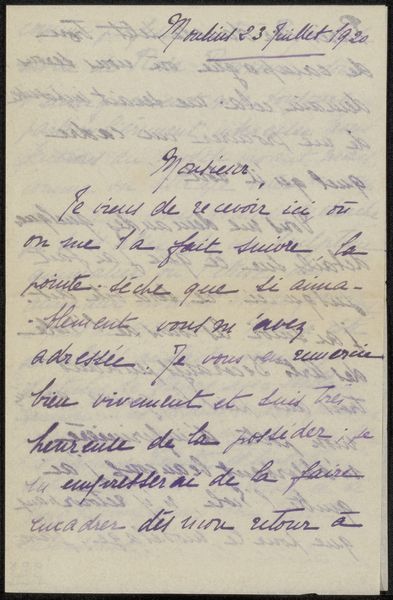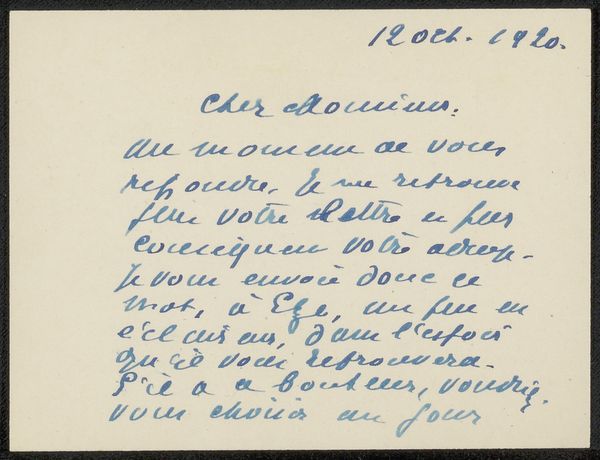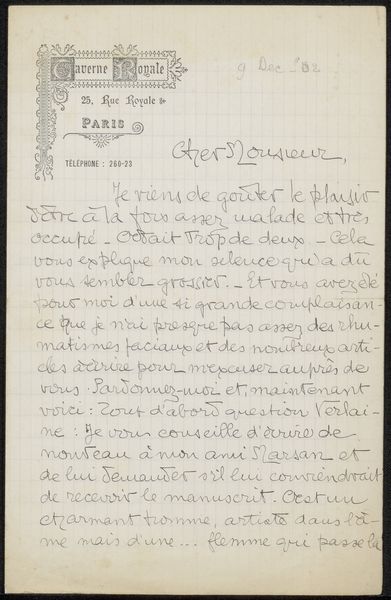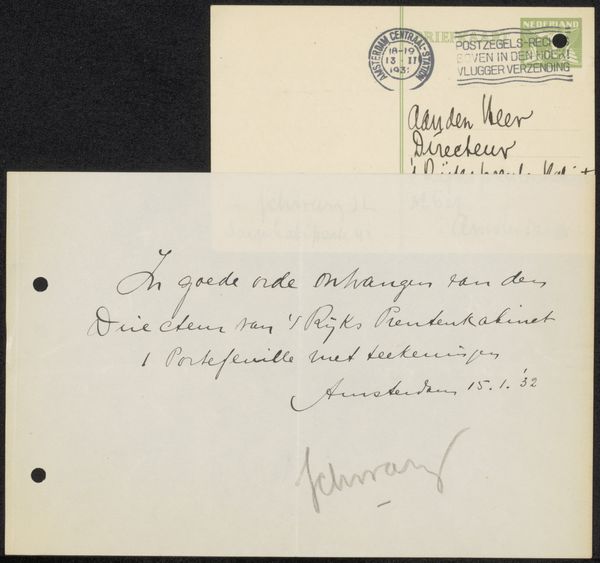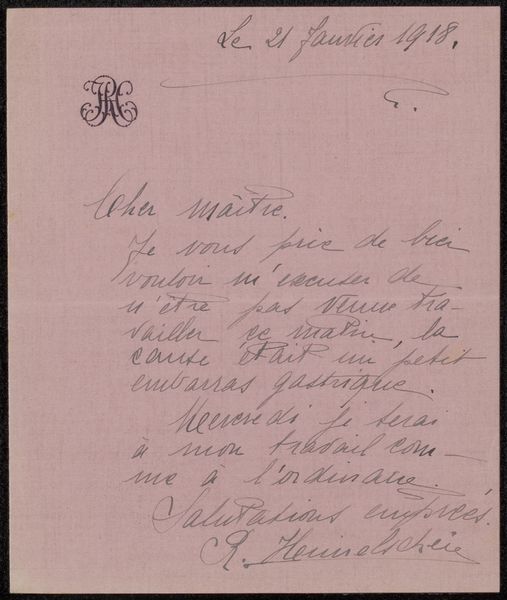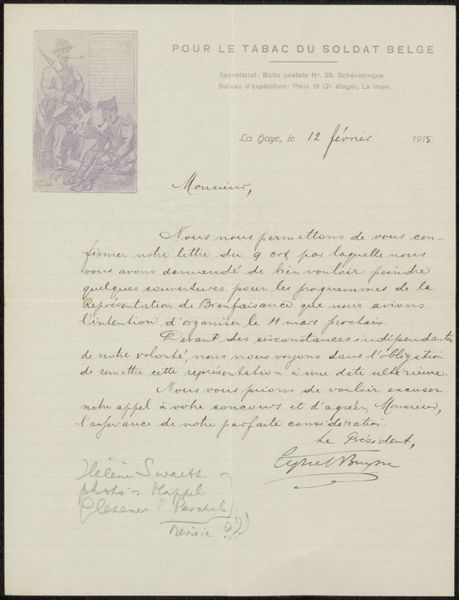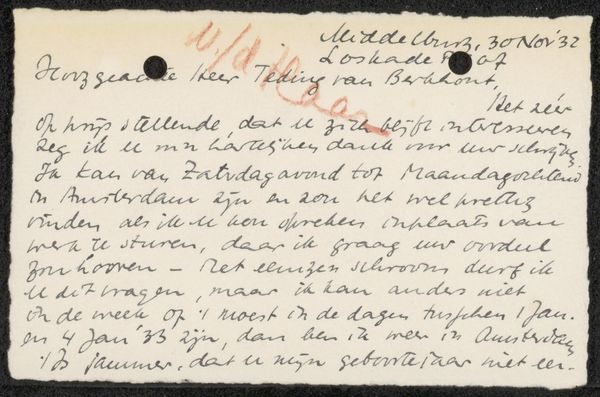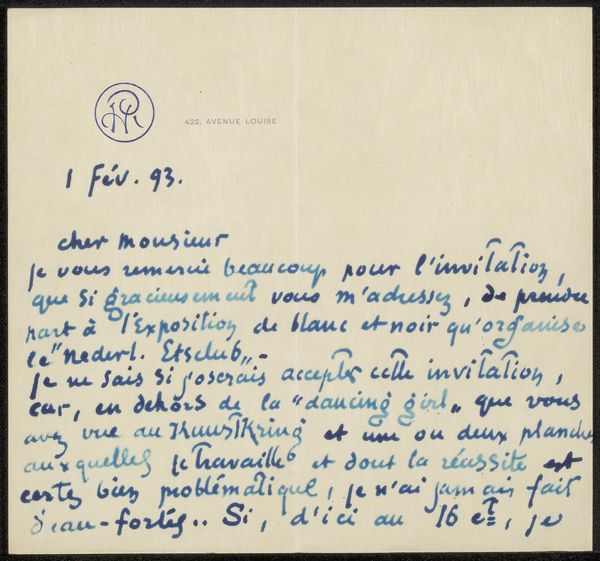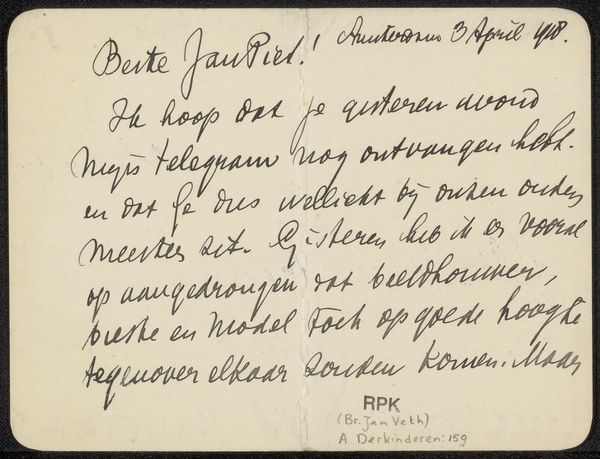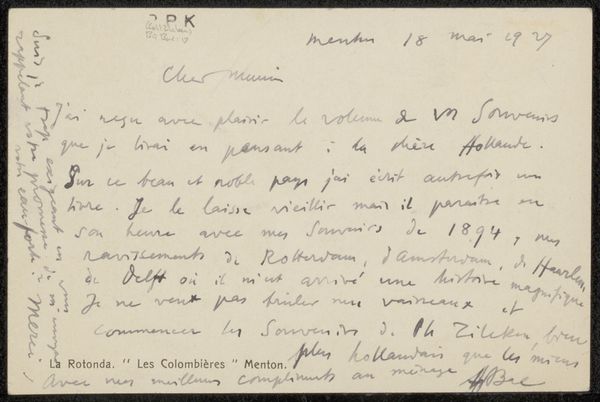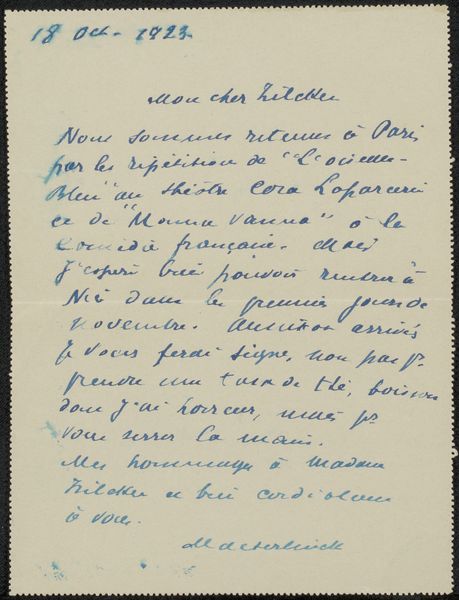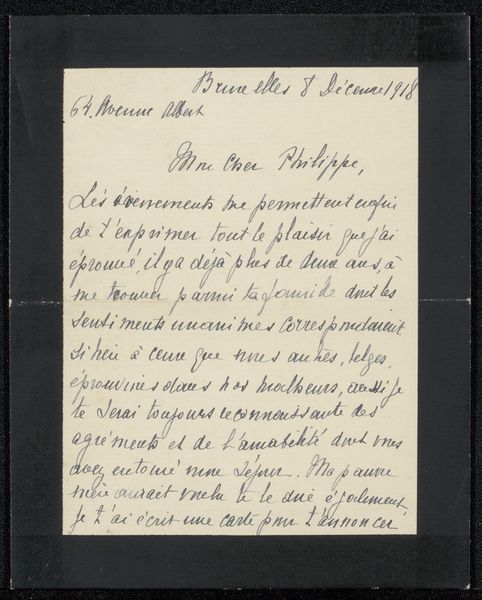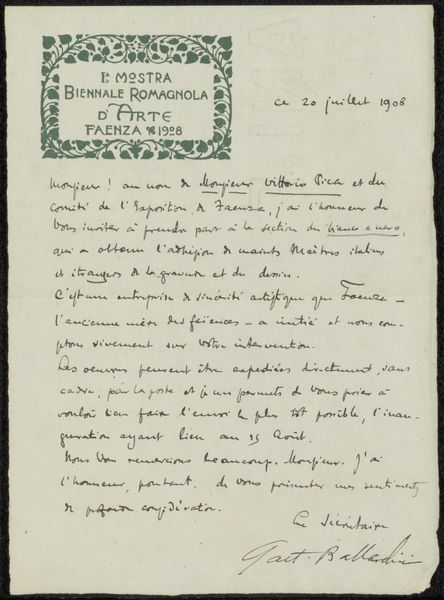
drawing, ink
#
drawing
#
script typography
#
hand-lettering
#
old engraving style
#
hand drawn type
#
hand lettering
#
personal sketchbook
#
ink
#
hand-drawn typeface
#
pen work
#
handwritten font
#
calligraphy
#
small lettering
Copyright: Rijks Museum: Open Domain
Curator: Here we have “Briefkaart aan Philip Zilcken,” or “Postcard to Philip Zilcken,” which we believe was made sometime between 1901 and 1923 by René Wiener. It's executed in ink, a simple drawing on what was once a standard postal card. Editor: My first impression is nostalgia. It whispers of a time when correspondence was an art form, each word carefully chosen, penned with deliberate grace. The smudged stamps and faded ink suggest a journey through time, both geographical and historical. Curator: Absolutely, and in its own way, it serves as a time capsule. Consider the function of postcards then—brief communiqués, a quick hello, or perhaps in this case, something more pertinent to Zilcken’s role as Secretary of the Exhibition of Modern and Applied Art. Wiener, deeply involved in the Art Nouveau movement, would likely have been corresponding about related matters. Editor: So this isn’t just a pretty piece of penmanship, but a professional communication, rendered with incredible artistry! The flourished script is stunning; the way "Zilcken" unfurls has this playful, almost dance-like quality, doesn’t it? But I wonder how legible it was considered back then—today it reads as both elegant and slightly challenging. Curator: It's a reflection of the Art Nouveau period, I believe, where even the most mundane elements of daily life were imbued with artistry and care. Typography itself became an art form, expressing not just the message, but the aesthetic sensibility of the sender. This card, you could say, elevates a simple task into an exquisite visual experience. Editor: It's almost poignant—this tangible connection across time. And it does highlight how we, perhaps, have lost some appreciation for that kind of deliberate, handcrafted communication. In our digital age, it is kind of a whisper of the past in its inky curves. Curator: Indeed, a poignant reminder. Thank you. Editor: My pleasure.
Comments
No comments
Be the first to comment and join the conversation on the ultimate creative platform.

